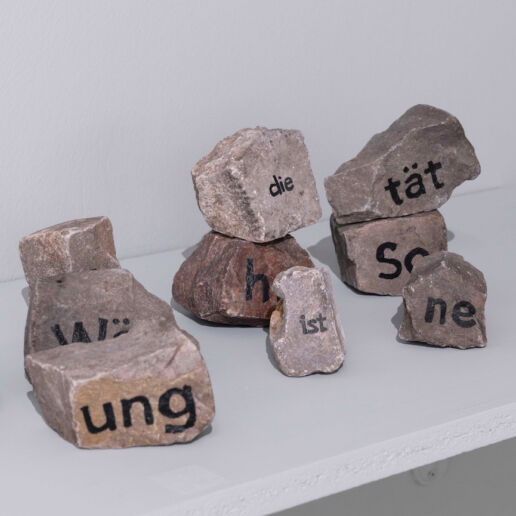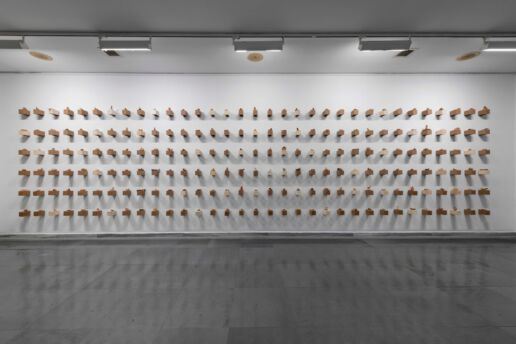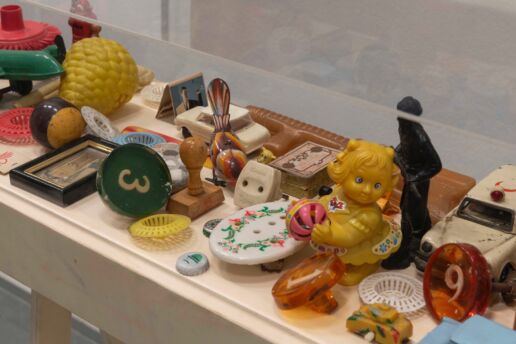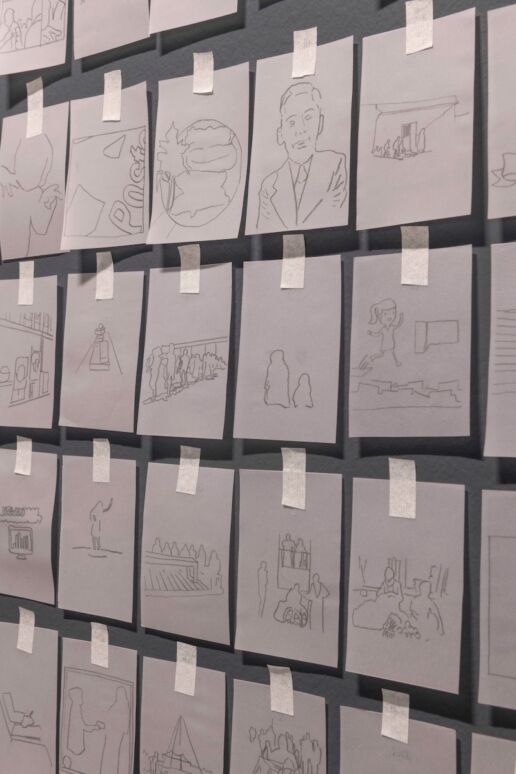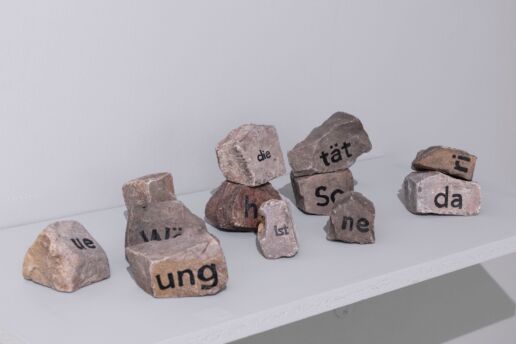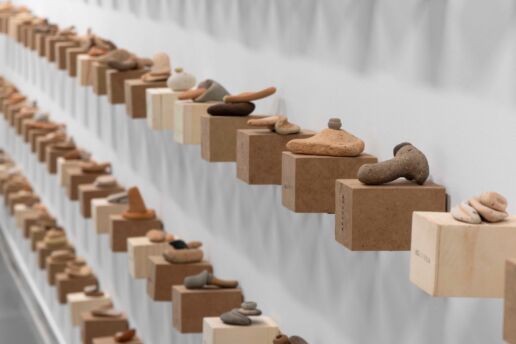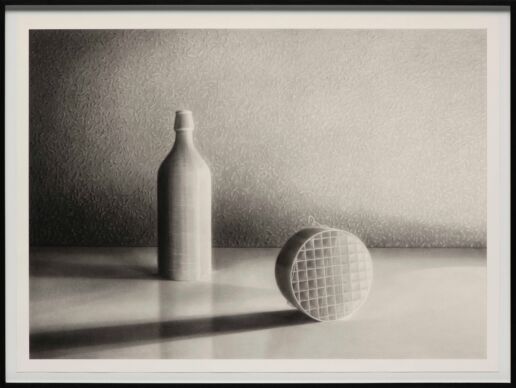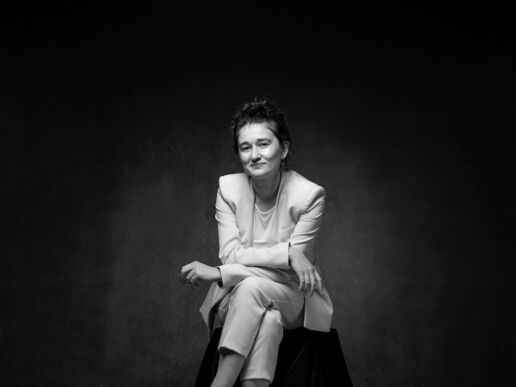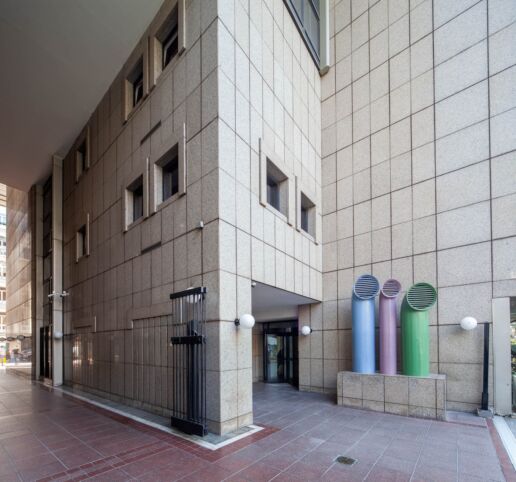IS THERE ANOTHER CHANCE?
Open until February 10th at the Milli Reasürans Art Gallery, 'Is There Another Chance?' sheds light on memory struggling to survive the craving for change and transformation imposed by the fast-paced age we live in. Exhibition curator Melike Bayık speaks about the works on display and how they relate to the building - hosting the exhibition.
‘Is There Another Chance?’ defends the importance of healing, repairing, and acting together so that collective memory benefits each other. It questions the intrinsic values and structures of memory that are gradually disappearing in modern Turkiye. The exhibition features a range of artists known for their works in different disciplines, including Mehmet Ali Boran, Antonio Cosentino, Memed Erdener, Yunus Emre Erdoğan, Kaan Fıçıcı, Şifa Girinci, Rana Kelleci, Melike Koçak, Aytekin Olgunsoy, Sümer Sayın, Egemen Tuncer, and Seçil Yaylalı. Their work might be different from each other, yet they express a coherent message using various materials. The focal point is preserving what exists and what is local. As residential areas, commercial zones, neighborhoods, and even towns face the growing threat of destruction, our losses and lifestyles are visible through the artists’ work.
Paper: ‘Is There Another Chance?’ brings together a lot of artists. What kind of a theme did you conceive to bring together artists from different disciplines in one exhibition?
Melike Bayık: First, Milli Reasürans Art Gallery has a vital role as the host venue. I’m a curator who pays attention to developing exhibitions that are interdisciplinary, intergenerational, and gender equal. These were all decisive factors in bringing together artists under this conceptual framework.
As the title suggests, ‘Is There Another Chance?’ aims to present an amalgamation of current, social, and personal issues. Through the cities and buildings we occupy, the exhibition highlights concepts such as urban justice, history, the past, nostalgia, insecurity, lack of identity, and belonging in a satirical way. It is an assessment of the possible urban and structural cycles of the past, present, and future in terms of culture, tradition, and lifestyles through the works of twelve artists.
P: The exhibition adopts a heterogeneous language to examine whether culture precedes humans or if it is humans who create culture. What is your personal opinion on this?
MB: I like to ask questions and encourage the audience to think. It is something I do in all the exhibitions I curate. In this exhibition, the artists’ question of whether culture paves the way for humans or if humans develop culture is hidden in the exhibition. However, saying this as a curator could easily seem like a spoiler about the enigma of the exhibition and the ways it is explored. My opinion is irrelevant here. What matters is the viewer’s take on this discreet quest by creating an illusion of thought based on their life experiences and sociological background. In this respect, perhaps my opinion on this is the exhibition itself, and the viewers’ opinions can continue to sail a vast ocean within this narrative.
P: The Milli Reasürans building complex has an important place in the city’s urban fabric owing to its corporate history dating back to the 1920s and its award-winning architectural design. What does having the exhibition held at one of Istanbul’s landmark galleries preparing to celebrate its 30th anniversary add to the narrative of an exhibition based on people and the city? As the curator, could you explain the connection between the building and the exhibition’s theme?
Melike Bayık: We are talking about an established gallery that has hosted major art exhibitions over the past three decades. It is important that a gallery has a deep-rooted history. This exhibition will also go down in the records and become part of collective memory. I believe gallery director Ayşe Gür and gallery coordinator Esra Melike Çuluk will provide a better overview of the history of the building and the gallery.
Ayşe Gür: Founded in 1929, Milli Reasürans T.A.Ş. (National Reinsurance Co.) had its main office in Türkiye Han in Sirkeci until it moved to Nişantaşı. The need for a modern building became evident as the company grew internationally and opened new departments during the 1980s. In December 1983, the board of directors decided on the construction of this building, and a competition was held for the architectural design. Of the nine applications, the jury committee agreed on a design by the architect couple Sevinç-Şandor Hadi. Construction began on October 20, 1987. The state-of-the-art building was designed to meet all the company’s needs and successfully integrate the head offices and commercial units with social areas. The company moved to its new address in Nişantaşı in January 1992, and Milli Re Art Gallery opened two years later. The company and the gallery remained in the same building until the head office relocated in August 2023.
Esra Melike Çuluk: Milli Re Art Gallery has hosted more than 180 exhibitions and established a considerable archive since it opened in 1994. This is an exciting time for us as the gallery with a reputable past in the field of art history in Turkey will be celebrating its 30th anniversary. Milli Re exhibitions include various disciplines such as sculpture, photography, architecture, and painting. The gallery’s archive of exhibition books is an essential source of information for researchers. Despite increasing printing costs and many other challenges, Milli Re takes pride in keeping to its tradition of publishing exhibition books that highlight the work of key figures in Turkish art, including Orhan Peker, Tiraje Dikmen, Naile Akıncı, Nevhiz and many more.
For the last year and a half, our team at the gallery has been working on digitizing 30 years’ worth of printed archive material. Once complete, the gallery’s entire archive, which consists of written materials such as visitor books and handwritten notes from exhibitions by names such as Léopold Lévy and Kuzgun Acar, alongside countless slides and negatives of the works, will be available online. Our plans for the 2025-2026 season to celebrate our 30th anniversary include an exhibition that will showcase the entire process and our gallery.
Melike Bayık: I feel privileged to work with a gallery that has such an extensive collection and archive, to be a part of it and hold an exhibition based on the architectural layout of an award-winning historical building. ‘Is There Another Chance?’ looks to the future through our historical background, considering factors like cultural erosion, variability in information flows, urban justice, destruction of collective memory with construction projects, migration, lack of belonging, and insecurity. The exhibition and accompanying book are additions to the growing archive of the Milli Re Art Gallery.
P: You mentioned an invisible link between the deep-rooted history of the Milli Reasürans Art Gallery and the production of the works. What does the use of stone symbolize as a material in some artwork? What is the feeling that stone gives you?
MB: The long history of the gallery represents the development, growth, and modernization of a re-established country, while the invisible bond between nostalgia and history is the focus of this exhibition. The stones mainly present clues about a journey, sometimes spontaneously, sometimes through the artist’s discourse, and sometimes based on my curatorial outlook. That fine line between building, making, and demolishing can be examined with pronounced didacticism through stones. So, ‘Is there another chance?’ asks the audience about the emotions, the nature of symbiosis, and parallelism in building and destroying. There is no single emotion here. Thousands of feelings, millions of variables, and the fluid memory of history are revealed with an imaginative irony.


